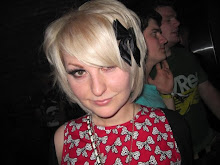OK, so you want to make some big bad bass wobble for you next dubstep track. Ill be going over a few different ways to get that shake down sound, and let me tell you its not all about the LFO as you might think.
So the LFO is one way of getting a nice dubstep wobble bass but you can get a very similar and more stable effect by using the filter envelopes on your synth. How this works is simple, you get your starting sound (probably a 2 oscillator square wave, slightly detuned, low pass filter etc). Then you set one of your envelopes to trigger the filter cut off, setting the attack in time with the music. This means when you play a note it will start with the filter cut off in a low position and then quickly open the filter exactly like how an LFO would would work but you just get the first open 'woooow' sound rather than a repeating 'wooowoooowoooow' sound like with a LFO. When this method is played with a quick note pattern (short often notes) it sound very similar to an LFO.
The LFO. This control is probably the main source you will turn to when you want to get your speakers wobbling like a true dubstep champion. You have the following controls:
Rate: This sets how fast or slow the wobble will be. You can either opt for a synchronized setting or free settings were you set the timings by hand. There are many arguments for each, but ultimately its up to you. The most common rate for dubstep is the ¼ or 1/8 settings. A good way to get a wicked variation is to have 2 synths one with a ¼ setting and one with a 1/8 setting and having different rates played per key, so first and second note would be ¼ and the 3rd note a 1/8 setting. This just ruffles things up a bit and keep the track fresh.
Amp: This effectively sets the amount of LFO (Low Frequency Oscillator) used, a low setting will mean the cut off will travel less further up to fully open, and a max amp will mean the filter opens up all the way, and then all the way back to the initial position. The automation of this setting can bring plenty of nastiness and joy to a track.
Delay: The delay effect is the time before the LFO kicks in after the note is pressed. Can be used to create very interesting sounds combined with other effects.
Sync to note on: Essential this means the LFO will reset on every key press, if it's off then playing a different note will make the LFO continue oscillating at its current rate and the note change.
Advancing, you can combine the 2 effects having a filter envelope for the first part of the sound and then having the LFO triggered half a second later using the 'delay' setting on the LFO (if you have one). This gives a kind of stuttered leap in to each note, done right its sound very very rude indeed especially for dubstep production.
The main thing to remember when programming synths is subtle movements of each slider works 100% better than drastic switches from left to right. All the advanced subtleness of extreme sound creation lies in the finding of the sweet spots of each control. These are very rarely at either end so be gentle with the synth and you will be rewarded with unique and pleasing (or dis-pleasing if that's your preference) sounds and patches.
The kind of sounds that typically works best for a dubstep wobble are, square waves with distortion, triangle waves and saw tooth waves for nastier sounds. Sine waves can be used but often are not the main preference for dubstep productions.
Thursday, 3 December 2009
How to make a good dubstep wobble, DJ, make music.
Labels:
abletron,
benga,
clubs,
dancing,
dj,
dubstep,
dubstep tracks,
fruity loops,
loefah,
make music,
reaper,
reason,
skream,
wobble
Subscribe to:
Post Comments (Atom)

No comments:
Post a Comment